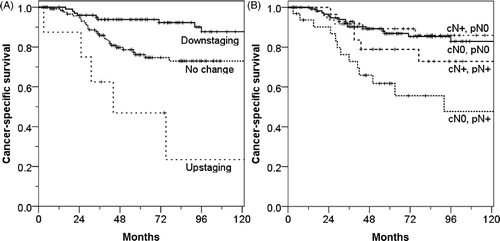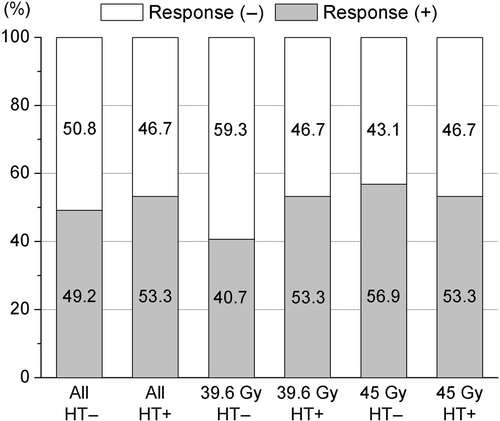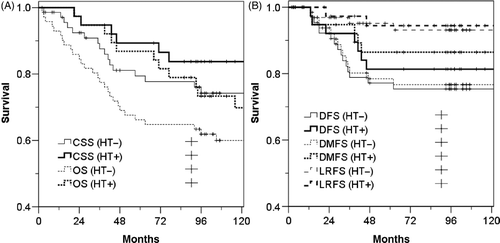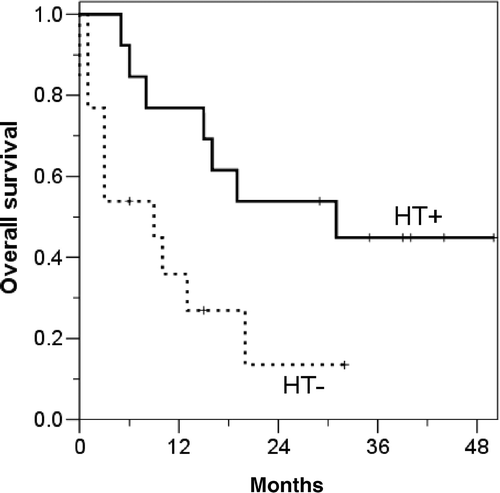Figures & data
Table I. Patient and tumour characteristics before preoperative radiochemotherapy.
Table II. Patient and tumour characteristics after preoperative radiochemotherapy.
Table III. Relationships between the tumour response with the changes in T and N stage.
Figure 1. Cancer-specific survival curves of 235 patients according to the change of T and N stage. (A) T stage (p < 0.001), and (B) N stage (p = 0.001).

Figure 2. Response (CR+PR) rate of tumor size according to hyperthermia (HT) and a total dose of radiotherapy. The overall response rate was 50.6% for the 214 evaluable patients.

Figure 3. Downstaging rates of T stage. The overall downstaging rate was 43.4%. Hyperthermia (HT) significantly increased the downstaging rate in the 39.6 Gy group (p = 0.047), but not in the 45 Gy group.

Table IV. Changes in lymph node status after preoperative radiochemotherapy according to hyperthermia.
Figure 4. Survival curves of the 39.6 Gy group according to hyperthermia (HT). (A) Overall survival (OS, p = 0.103) and cancer-specific survival (CSS, p = 0.254), and (B) disease-free survival (DFS, 0.471), local relapse-free survival (LRFS, 0.785) and distant metastasis-free survival (DMFS, p = 0.236).

Figure 5. Survival curves of the 45 Gy group according to hyperthermia (HT). (A) Overall survival (OS, p = 0.598) and cancer-specific survival (CSS, p = 0.682), and (B) disease-free survival (DFS, p = 0.799), local relapse-free survival (LRFS, p = 0.688) and distant metastasis-free survival (DMFS, p = 0.944).

